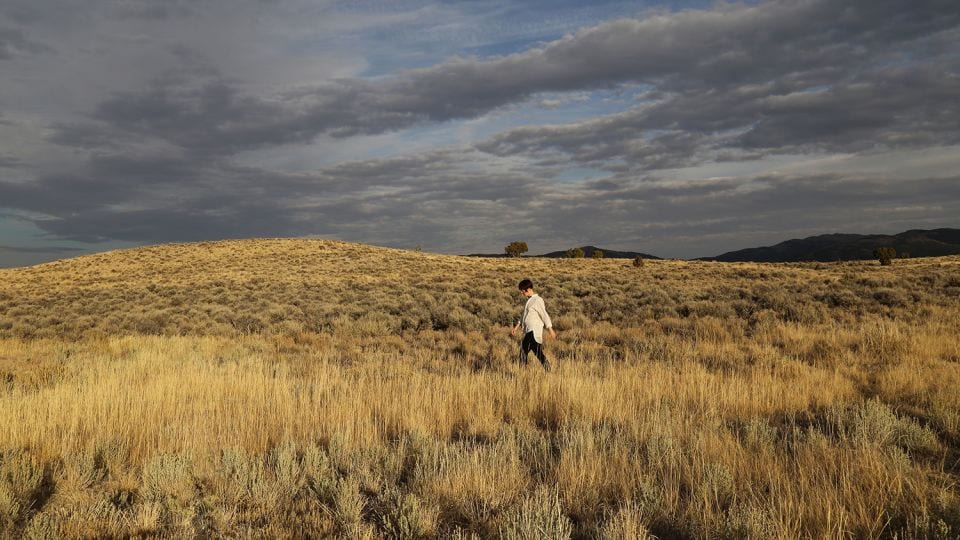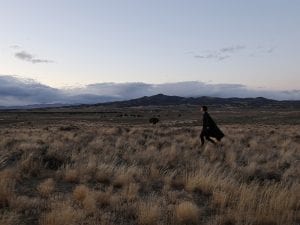Sara Morawetz work is both research and process-driven, employing durational, repetitive and participatory elements. How The Stars Stand – which was shortlisted for the Aesthetica Art Prize in 2017 – includes a performance cycle that represents the length of the day on Mars. In conversation with Aesthetica, the artist considers what it means to combine art and science.
A: How The Stars Stand is a 37-day durational performance which represents the length of days on Mars. How do you present intangible concepts through art, and why do you think it’s important to make sense of such themes through contemporary expression?
SM: I think my role as an artist is to be that of an observer and an investigator – one with an interest in understanding the spaces “inbetween” concepts such as time and measurement. I am drawn to these subjects because they operate as both scientific and societal tools and – through this duality – are simultaneously known and unknown to us throughout our lives. Time and measurement in science mean something slightly different than time and measurement in society – and yet they are also the same thing – each existing only because of the other. I find this to be a wonderful concept to reflect upon! I hope that I can illuminate how science situates itself within everyday structures and how our societal needs have informed scientific focus – I feel that unpacking this reciprocity is important to our understanding of both spheres. Representations of intangibility are not so straightforward. My own solution is to adopt mechanisms borrowed from science itself and fold them into art – deriving a performance-based practice as “experiment” and utilising my own body as “apparatus”. In this way, I apply a sense of lived tactility to somewhat inscrutable notions – time passing marked by different metrics; the steady migration of the moon from our orbit. These ideas are represented easily in the abstract language of science, and yet mean little to us until we’ve experienced a sense of them firsthand.
A: An upcoming project of yours, étalon, comprises a walk along la Méridienne de France. Traversing the distance between Dunkerque and Barcelona, the piece searches for origins of the metre as a measurable unit of distance. Why are you interested in a sense of value?
SM: Through my regard for scientific and societal overlaps, the definition and assignment of value appears as a recurring concern. I suggest that this is a fundamental part of human nature – as a species we are driven to define arbitrary frameworks in place of intangible constructs – to “standardise” experience in one manner or another and thus make the world less overwhelming 13 and unknowable. By ascribing value we assert order, we construct – and the vastness both beyond us (and within us) becomes an accountable space – representable and collectively shared. This is not an unproblematic gesture (we must constantly consider who assigns these values and why, and at what cost to other voices) but the construction of such systems is an inherent process. Ultimately, it is this process rather that the specific outcomes that I am truly interested in. In this way, étalon examines the history and production of the metre as a standard length, but is more importantly a homage to the physical, mental and emotional endurance that humanity has undertaken in order to construct this standard in the first place.
A: Art is a mechanism for understanding the world around us. In what way does your work explore a meeting point between science and expression ?
SM: My work is certainly influenced by life experiences. I am married to a research scientist – so this intersection of science, art and the everyday informs a personal narrative as much as my wider practice. My husband is a researcher at NASA’s Goddard Institute for Space Studies and so there is a sense of collaboration. My sounding board and his scientific outlook has offered an entirely different perspective – one that now frames the way I view the world. I am so thankful for this hybridisation – blending the poetry of art with the rigour of science – to explore the balance between emotional and logical outcomes. We discuss the nature of “things” – what does it mean to “experiment” or to “collect data”? Does art really have (or need) underlying “logic”? What is this thing called “proof ”, and why should we all be so enraptured by it?

A: Your practice is multidisciplinary, often pulling together strands of performance and photography. How do these two ways of working complement and influence one another?
SM: Performance and photography are disciplines that share a communal and well documented history dating back to the interdisciplinary avant-garde of the 1960s. Live and durational works have long been both catalogued and characterised by photographic images and our knowledge of performances are often intrinsically linked to this archive. The performance practices of artists I admire greatly, such as Tehching Hsieh, Bruce Nauman and Bas Jan Ader are bodies of work that I have only ever experienced through documentation, so I am incredibly aware of the power and inevitable complexity that exists between an action and its image. Throughout my practice, I situate my body in the context of an experiment – I am literally a test subject exploring an idea through physical action. I think of the resulting photo-documentation as a “data set” – a record of the experimental conditions that encapsulate each performance.
A: In an accelerating artistic landscape, how important is it for artists to engage with innovative methodologies and combine disciplines?
SM: I believe the role of an artist is to do justice to the “idea” of a work itself, and that the methodologies deployed within a practice should be selected judiciously, and not seek to outstrip the underlying conceptual premise. The work should be no more and no less than what is absolutely necessary – I’ve never been one for technological flair “ just because.” In a mathematical proof they would call this an “elegant solution” – an approach in which the maximum desired effect is achieved with the smallest or simplest effort. What this results in (in terms of methodological approach or disciplinary convergence) is anyone’s guess – but I don’t think artists should feel compelled to apply all strategies simply because they are available. That said, I am of course a fan of cross-disciplinary collaboration. It is a remarkably rich field for research-based practitioners and can generate new outcomes across many areas of inquiry. I would argue that this is not an entirely “new” thing though, but is rather an evolving practice that can be traced all the way back to Duchamp and the proto-conceptualists of the early 20th century.
A: Many of your works can, arguably, stand alone as compositions in their own right, yet when observed together, they create a compelling and cross-referential narrative. How important is this dynamic of movement, and what do you think this means for the way that audiences interpret image-based artworks as disseminated data?
SM: I think of my of my practice as a life-long experimental enquiry – a larger conceptual whole in which each work exists as a singular experiment or test. This approach operates as both a dissemination and cultivation of data – allowing the audience to contemplate the “interconnectedness” of seemingly unrelated constructs. I constantly return to a quote of John Culkin’s: “We shape our tools and thereafter our tools shape us.” Aspirationally, at least, I have tried to make these ideas a guiding philosophy in my research and arts practice.
Sara Morawetz. Find out more about the artist’s work here.
Credits:
1. Images from étalon, courtesy Sara Morawetz.





